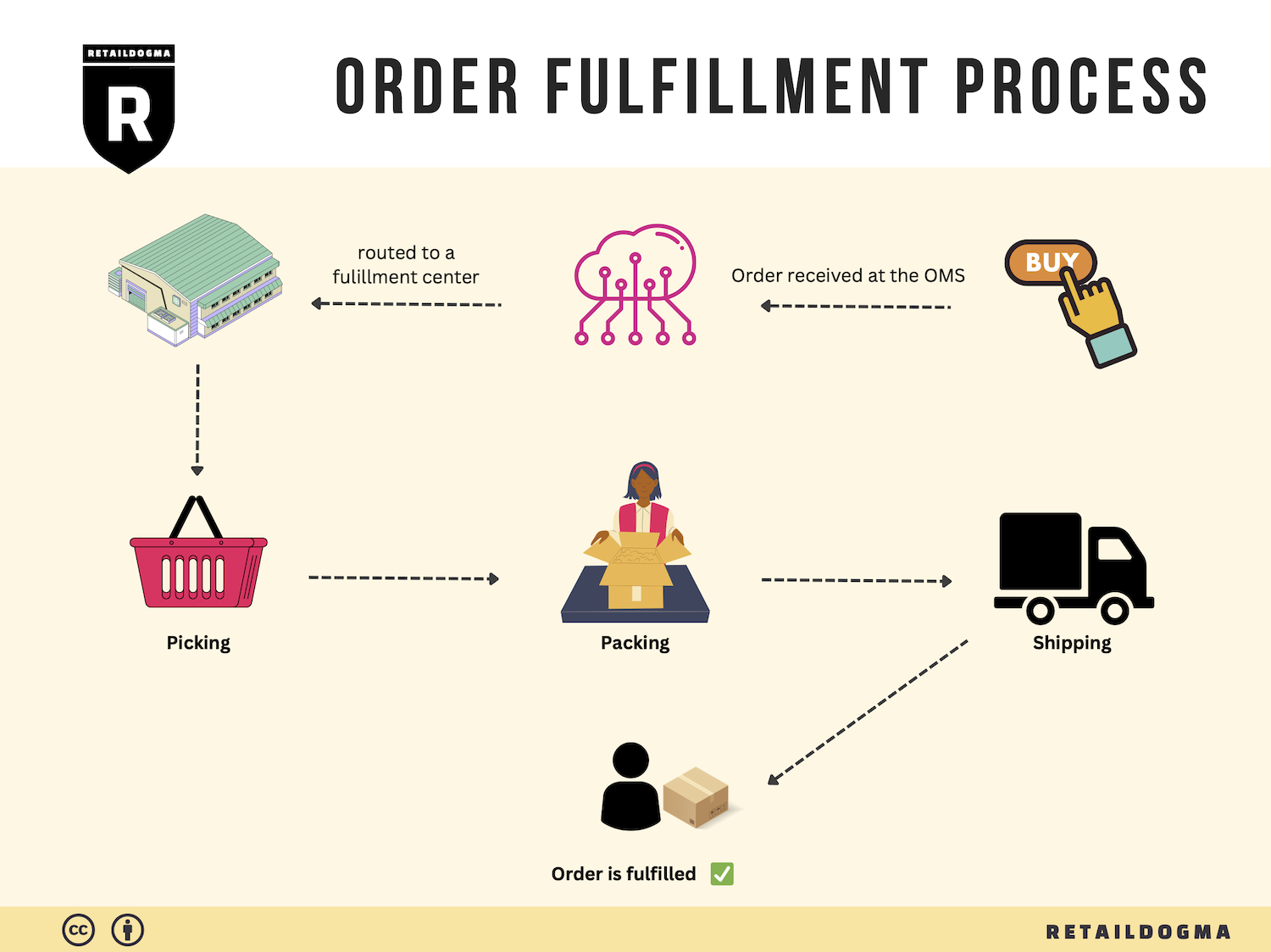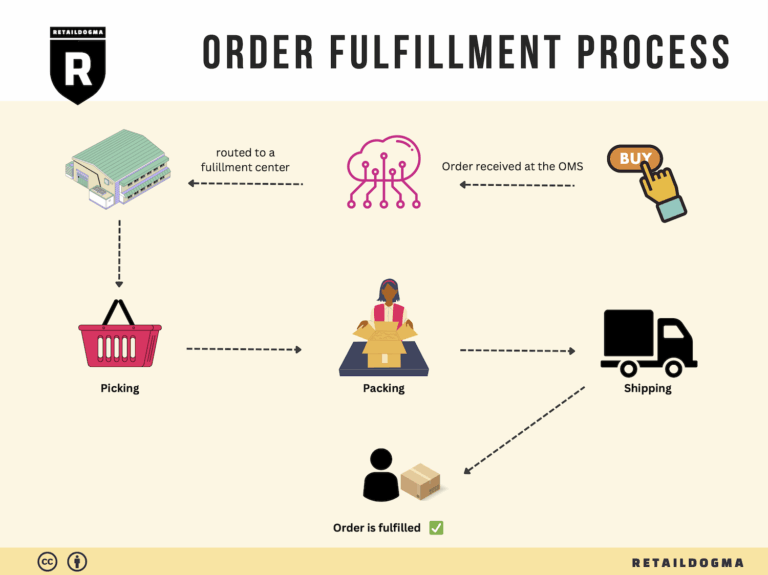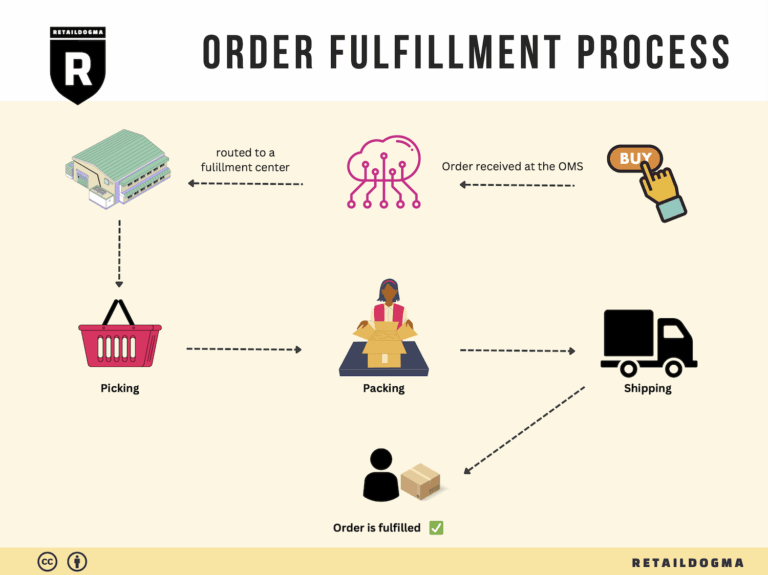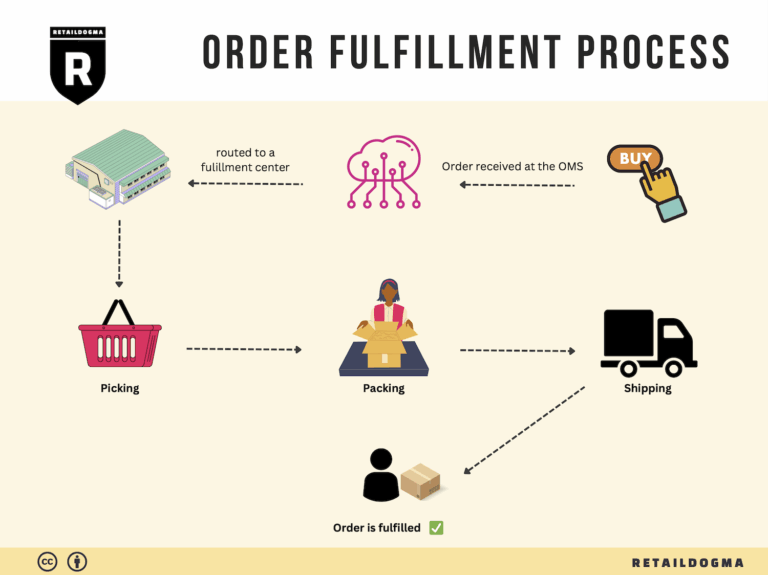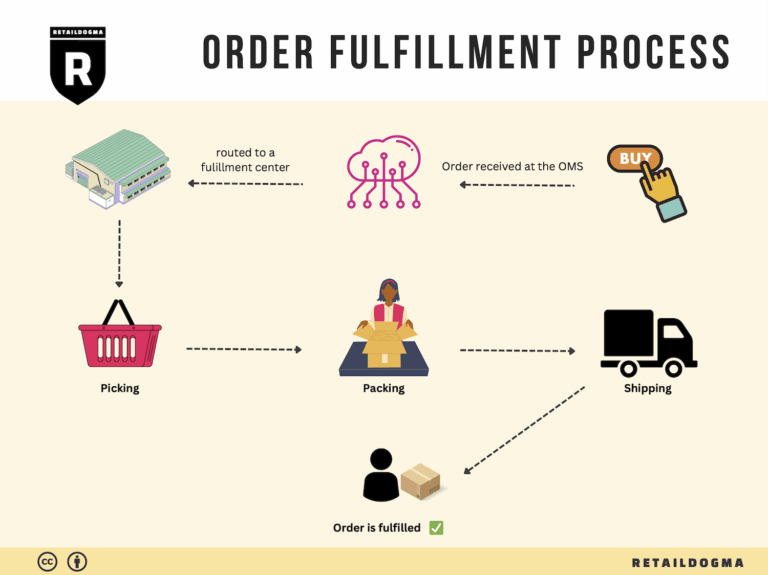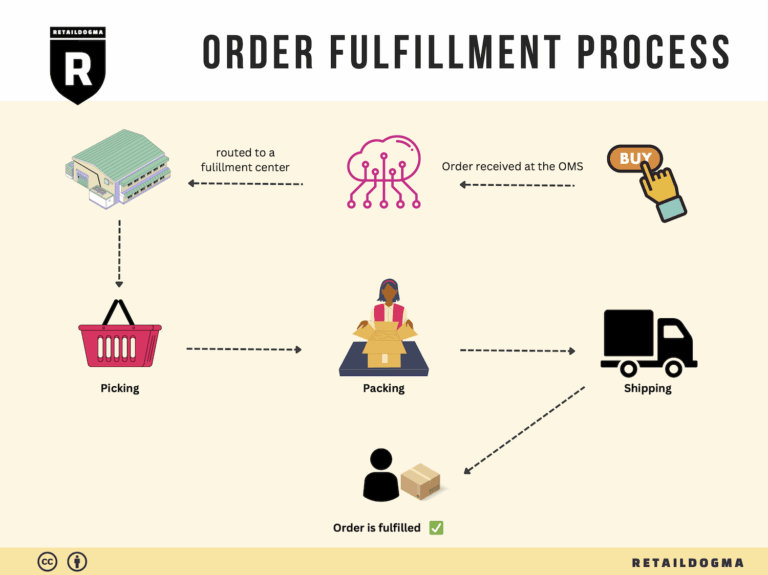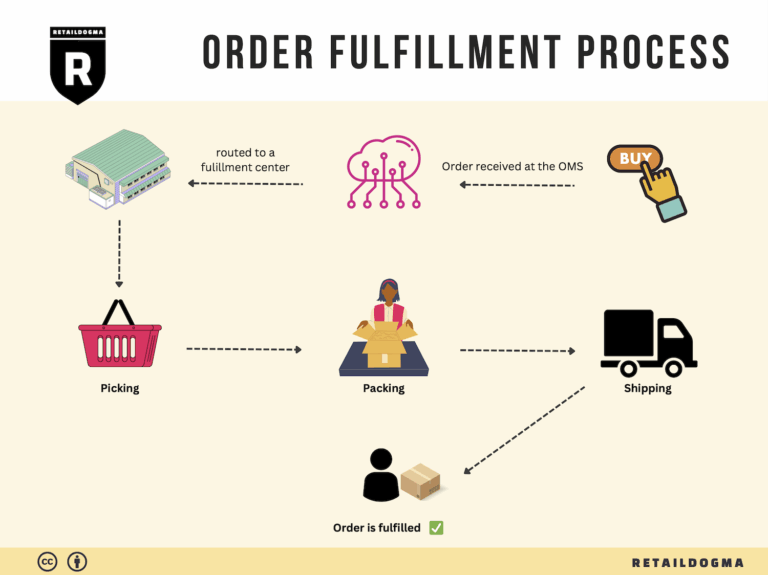How Order Fulfillment Works: A Step-by-Step Guide for Businesses
What is E-commerce Fulfillment? An Introduction for Growing Businesses
Understanding E-commerce Fulfillment
As e-commerce business owners, you may often find yourself overwhelmed by the sheer volume of orders that need to be packed, shipped, and delivered. This challenge can divert your focus away from scaling your business and enhancing customer experiences. Efficient fulfillment is crucial; it is the process that ensures your products reach your customers in a timely manner, fulfilling their expectations and solidifying their loyalty to your brand.
E-commerce fulfillment encompasses everything from inventory management to order processing, packing, and shipping. It is a vital component of your operations that can make or break your business’s reputation. For growing businesses, understanding the nuances of fulfillment can significantly impact your bottom line and operational efficiency.
In this guide, we will explore the various fulfillment models available to e-commerce businesses, including third-party logistics (3PL) and Fulfillment by Amazon (FBA). Each model has its own advantages and considerations, and the right choice depends on your specific needs and growth ambitions.
We will also delve into the core services that fulfillment partners typically offer. These services include inventory storage, order processing, packing, shipping, and returns management. Understanding these services will help you evaluate potential partners based on what they can provide.
Choosing the right fulfillment partner is not just about cost; it involves assessing their technology, network capabilities, and customer service. We will provide practical criteria to help you navigate this selection process effectively, ensuring you find a partner that aligns with your business goals.

Additionally, we will discuss pricing structures commonly associated with fulfillment services. Knowing how to interpret and compare costs will empower you to make informed decisions that can lead to substantial savings and improved service levels.
The ultimate goal of this guide is to empower you—business owners, operations managers, and entrepreneurs—to make smart decisions about your logistics. By equipping you with the knowledge of e-commerce fulfillment, we aim to alleviate some of the operational burdens you face, enabling you to focus on what truly matters: growing your business and delighting your customers.
What You’ll Learn In This Guide
- What is E-commerce Fulfillment? An Introduction for Growing Businesses
- The Order Fulfillment Process: From ‘Buy’ Button to Customer’s Door
- Comparing Fulfillment Models: In-House vs. 3PL vs. Dropshipping
- A Deep Dive into Amazon FBA: Pros, Cons, and Who It’s For
- Core Services Offered by Fulfillment Centers
- How to Choose a Fulfillment Partner: A 6-Point Checklist
- Understanding Fulfillment Pricing: A Breakdown of Common Fees
- Frequently Asked Questions (FAQs) about Fulfillment
- Conclusion: Is Outsourcing Fulfillment the Right Move for Your Business?
- Important Disclaimer
The Order Fulfillment Process: From ‘Buy’ Button to Customer’s Door
1. Receiving Inventory
The first step in the order fulfillment process is receiving inventory. This involves accepting shipments from suppliers and ensuring that the products match the purchase orders in terms of quantity and specifications. Each product is typically assigned a Stock Keeping Unit (SKU), which helps in tracking inventory levels and sales performance.
Importance: Properly receiving inventory is crucial for maintaining accurate stock levels, which directly affects the ability to fulfill customer orders promptly. If discrepancies occur during this step, it can lead to stockouts or overstock situations, both of which can harm your business’s bottom line.
Key Term: SKU (Stock Keeping Unit) – A unique identifier for each product, allowing for effective tracking and management of inventory.
2. Warehouse Storage
Once the inventory has been received and verified, it is stored in the warehouse. Efficient warehouse storage involves organizing products systematically to facilitate quick retrieval. This can include using shelving, bins, or pallets, and often relies on warehouse management systems (WMS) to optimize space and track inventory.
Importance: Effective storage solutions minimize the time and labor needed to pick items for orders. A well-organized warehouse can significantly improve operational efficiency, reduce labor costs, and enhance order accuracy. By utilizing data-driven insights, businesses can position fast-moving items closer to packing areas.
Key Term: Warehouse Management System (WMS) – A software solution that helps manage warehouse operations, including inventory tracking and optimizing storage space.
3. Order Picking
Order picking is the process of selecting items from storage to fulfill customer orders. This can be done manually or through automated systems, depending on the scale and technology available in the fulfillment center. Pick lists, which are generated based on customer orders, guide the picking process.
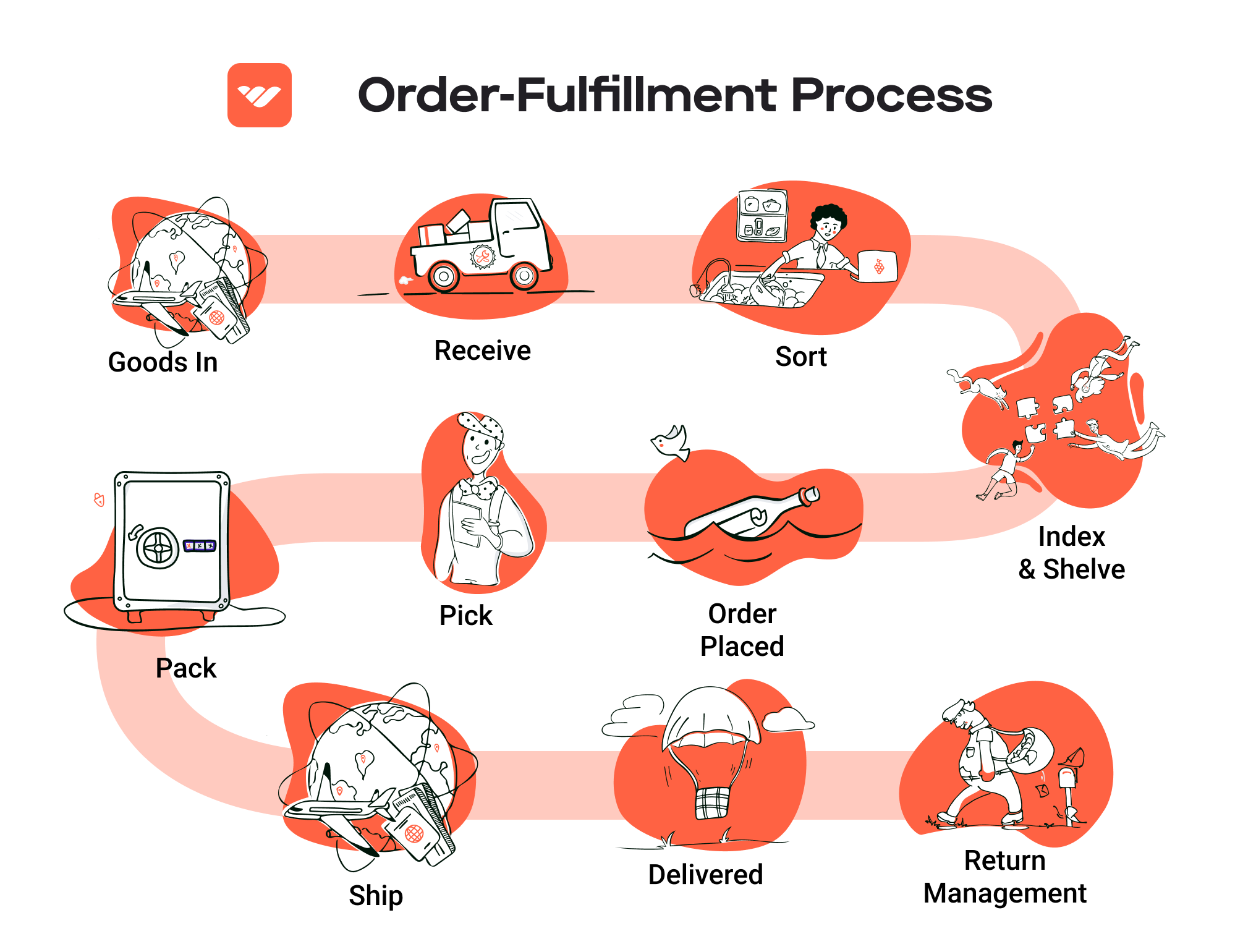
Importance: Efficient order picking is critical for reducing lead times and ensuring that customers receive their products as quickly as possible. Errors during this step can lead to incorrect shipments, which can damage customer satisfaction and increase return rates.
Key Term: Pick List – A document or digital tool that outlines the items and quantities to be picked for each order, streamlining the picking process.
4. Order Packing
After picking, the next step is order packing. This involves carefully packaging the items to ensure they arrive at the customer’s door in perfect condition. Proper packing materials and methods are essential to protect products during transit. Many fulfillment centers utilize packing slips and shipping labels to streamline this process.
Importance: Packing is more than just placing items in a box; it’s about creating a positive unboxing experience for customers. This step impacts customer perceptions of your brand, and poor packing can result in damaged goods and customer dissatisfaction. Moreover, efficient packing can minimize shipping costs by reducing package size and weight.
Key Term: Packing Slip – A document included in the package that lists the items contained within, serving as both a receipt for the customer and a reference for the fulfillment center.
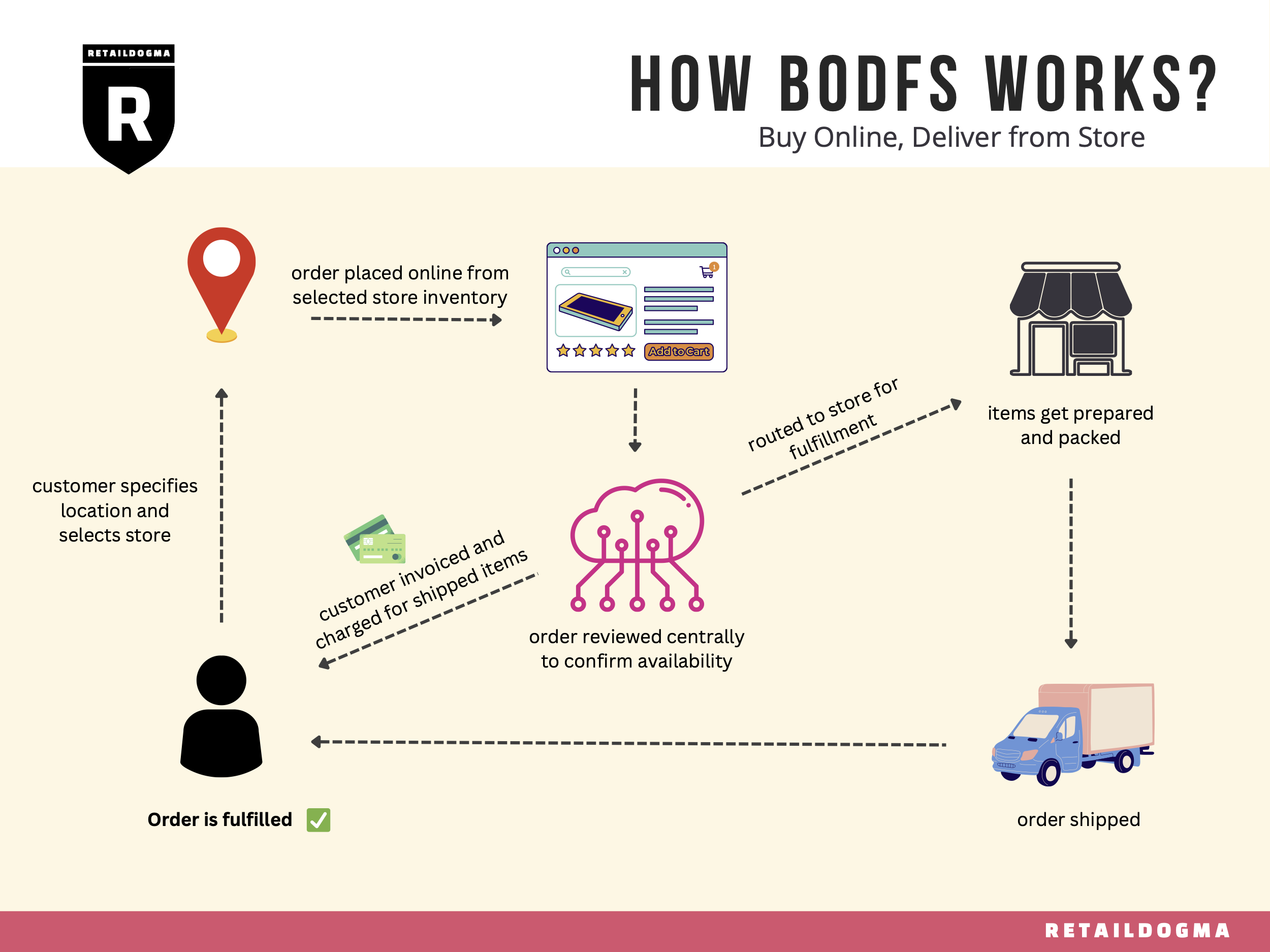
5. Shipping & Delivery
The final step in the order fulfillment process is shipping and delivery. Once orders are packed, they are handed over to shipping carriers for delivery to the customer. Effective shipping strategies involve choosing the right carriers and service levels (e.g., standard or expedited shipping) based on customer preferences and cost considerations.
Importance: Timely and reliable shipping is a key driver of customer satisfaction. The speed and accuracy of delivery can significantly influence repeat purchases and brand loyalty. Additionally, leveraging data analytics can help optimize shipping routes and costs, enhancing overall operational efficiency.
Key Term: Shipping Carrier – A company that transports goods from the fulfillment center to the customer, which may include postal services, courier companies, or freight services.
In conclusion, understanding each step of the order fulfillment process—from receiving inventory to shipping—enables e-commerce businesses to refine their operations, enhance customer experiences, and ultimately scale their logistics efficiently. By focusing on these five critical steps, businesses can streamline their fulfillment operations and meet the growing demands of their customer base effectively.
Comparing Fulfillment Models: In-House vs. 3PL vs. Dropshipping
Fulfillment Model Comparison Table
| Model | Who Handles Inventory | Best For (Business Stage) | Key Advantage | Key Disadvantage |
|---|---|---|---|---|
| In-House Fulfillment | The business itself | Established businesses | Complete control over inventory and processes | High operational costs and complexity |
| Third-Party Logistics (3PL) | A specialized provider | Growing businesses | Cost savings and scalability | Less control over inventory and processes |
| Dropshipping | Supplier or manufacturer | Startups and small businesses | Low overhead and minimal risk | Lower profit margins and longer shipping times |
In-House Fulfillment
In-house fulfillment involves managing the entire logistics process within the business’s own facilities. This model is typically suited for established businesses that have sufficient capital and resources to invest in warehousing, staffing, and logistics infrastructure. The key advantage of in-house fulfillment is the complete control it provides over inventory management and order processing. Businesses can tailor operations to their specific needs, ensuring that quality standards are consistently met and that the fulfillment process aligns seamlessly with their overall brand strategy.
However, the disadvantages are significant. Running an in-house fulfillment operation can be costly and complex, requiring a dedicated team to handle warehousing, inventory management, packing, and shipping. This model also demands a substantial investment in technology and infrastructure, which can divert resources from other critical areas of the business. As a result, many companies find that as they scale, in-house fulfillment becomes increasingly challenging and may hinder their ability to respond to market changes quickly.
Third-Party Logistics (3PL)
Third-party logistics (3PL) providers offer a flexible solution for businesses looking to outsource their fulfillment operations. This model is particularly appealing for growing businesses that want to focus on core competencies such as marketing and product development without getting bogged down by logistics. 3PL providers handle all aspects of order fulfillment, including warehousing, inventory management, and shipping, allowing businesses to leverage their expertise and technology.
One of the primary benefits of using a 3PL is the cost savings associated with outsourcing logistics. Businesses can take advantage of economies of scale, as 3PL providers often have multiple clients and larger shipping volumes that lower costs. Additionally, 3PLs can provide faster shipping times and better distribution by utilizing a network of fulfillment centers strategically located near key markets. However, the trade-off is a loss of direct control over inventory and fulfillment processes. Businesses must rely on their 3PL partner to maintain quality and meet service level agreements, which can introduce risks if the provider does not align with the business’s standards or operational needs.
Dropshipping
Dropshipping is an increasingly popular fulfillment model, especially for startups and small businesses. In this model, the retailer does not hold inventory; instead, they partner with suppliers or manufacturers who ship products directly to customers upon receiving orders. This approach allows businesses to launch with minimal upfront investment since they do not need to purchase inventory or manage warehousing.
The key advantage of dropshipping is the low overhead and reduced financial risk. Businesses can test new products without the burden of stocking inventory, and they can quickly pivot based on market demand. This model also enables entrepreneurs to focus on marketing and customer acquisition rather than logistics. However, dropshipping has notable downsides, including lower profit margins due to supplier costs and longer shipping times, which can impact customer satisfaction. Additionally, reliance on third-party suppliers can lead to inconsistencies in product quality and fulfillment speed, making it essential for businesses to carefully vet and maintain strong relationships with their dropshipping partners.
Conclusion
Choosing the right fulfillment model is crucial for the success of an e-commerce business. Each model—In-House Fulfillment, Third-Party Logistics (3PL), and Dropshipping—offers unique advantages and challenges. Established businesses may benefit from the control and customization of in-house fulfillment, while growing businesses often find that a 3PL can provide the scalability and cost-effectiveness they need. For startups, dropshipping presents an accessible entry point into the market but requires careful management of supplier relationships to ensure a positive customer experience. Understanding these models allows business owners to make informed decisions that align with their operational capabilities and growth strategies.
A Deep Dive into Amazon FBA: Pros, Cons, and Who It’s For
Understanding Fulfillment by Amazon (FBA)
Fulfillment by Amazon (FBA) is a service provided by Amazon that allows sellers to store their products in Amazon’s fulfillment centers. Amazon then takes care of storage, packaging, and shipping to customers. This service is designed to simplify the selling process for e-commerce businesses, particularly those looking to scale quickly and efficiently.
When a customer makes a purchase, Amazon picks, packs, and ships the products on behalf of the seller. Additionally, Amazon handles customer service and returns, allowing sellers to focus on growing their businesses rather than managing logistics.
How FBA Works
-
Product Listing: Sellers create product listings on Amazon and specify that they want to use FBA.
-
Inventory Shipment: Sellers send their inventory to Amazon’s fulfillment centers. The inventory can be sent in bulk or in smaller batches, depending on the seller’s strategy.
-
Storage and Management: Once the inventory arrives at Amazon, it is stored until sold. Amazon manages the inventory, providing sellers with tools to monitor stock levels and sales performance.
-
Order Fulfillment: When a customer places an order, Amazon picks the product from the fulfillment center, packs it, and ships it directly to the customer.
-
Customer Service and Returns: Amazon also handles customer inquiries and product returns, making the process seamless for both sellers and buyers.
Pros of Fulfillment by Amazon (FBA)
-
Prime Eligibility: One of the most significant advantages of using FBA is the ability to offer products with Amazon Prime eligibility. Prime members enjoy free two-day shipping, which can significantly increase sales, as many consumers prefer to buy products with this shipping option.
-
Customer Trust: Selling through Amazon lends credibility to your brand. Customers often feel more secure purchasing from sellers who use FBA because they trust Amazon’s fulfillment and customer service processes.
-
Multi-Channel Fulfillment: FBA isn’t limited to Amazon sales. Sellers can utilize FBA to fulfill orders from other sales channels, such as their own websites or other marketplaces. This allows businesses to maintain a streamlined fulfillment process across various platforms.
-
Scalability: FBA provides a scalable solution for businesses. As demand for products increases, sellers can send more inventory to Amazon without needing to invest in their own warehousing or logistics infrastructure.
-
Time-Saving: By outsourcing fulfillment to Amazon, sellers save time on logistics, allowing them to focus on marketing, product development, and customer engagement.
Cons of Fulfillment by Amazon (FBA)
-
High Fees: One of the most notable downsides of FBA is the cost. Amazon charges various fees, including storage fees and fulfillment fees, which can eat into profit margins. Sellers must carefully calculate these costs to ensure they remain profitable.
-
Strict Inventory Rules: Amazon has specific inventory management policies that sellers must adhere to. This includes maintaining stock levels and adhering to guidelines about product packaging and labeling. Failure to comply can result in penalties or account suspension.
-
Commingling Risks: When using FBA, sellers’ products are often commingled with those of other sellers, which can lead to potential issues. For instance, if a customer returns a product, it might not be clear which seller’s item is being returned, potentially leading to disputes over quality and condition.
-
Limited Control Over Fulfillment: Sellers relinquish a degree of control over how their products are stored, packed, and shipped. This can be a concern for brands that want to maintain a specific unboxing experience for their customers.
-
Inventory Management Challenges: While Amazon provides tools for inventory management, sellers must still monitor their stock levels closely. Poor inventory management can lead to stockouts or excess inventory, both of which can have negative financial implications.
Who is FBA Best For?
Fulfillment by Amazon is particularly well-suited for:
-
Small to Medium-Sized E-commerce Businesses: Companies that lack the resources to manage their own fulfillment operations can benefit significantly from FBA’s comprehensive services.
-
Brands with Seasonal Demand: Businesses that experience fluctuating sales volumes throughout the year can leverage FBA to scale up or down without the overhead associated with warehousing.
-
Entrepreneurs Looking to Scale: For those aiming to grow quickly, FBA offers a way to handle logistics efficiently, allowing business owners to focus on strategy and sales rather than fulfillment.
-
Sellers with Diverse Product Lines: If you offer a wide range of products, FBA can help streamline the fulfillment process, managing various SKUs without the need for extensive infrastructure.
In conclusion, Fulfillment by Amazon is a powerful tool for e-commerce businesses looking to enhance their logistics capabilities and reach a broader audience. However, it is essential to weigh the pros and cons carefully, considering how FBA aligns with your business model and goals. Understanding the intricacies of FBA can empower you to make informed decisions that will drive your business forward in the competitive e-commerce landscape.
Core Services Offered by Fulfillment Centers
Inventory Management & Warehousing
Inventory management and warehousing are foundational services provided by fulfillment centers. This involves the systematic tracking and storing of products in a warehouse until they are ready to be shipped to customers. Fulfillment centers utilize sophisticated Warehouse Management Systems (WMS) that allow businesses to gain real-time visibility into their inventory levels, locations, and movements.
Benefits:
1. Real-Time Inventory Tracking: Businesses can monitor stock levels and manage reordering processes efficiently, ensuring they never run out of popular items.
2. Optimal Storage Solutions: Fulfillment centers can offer various storage options, such as climate-controlled environments for sensitive products, helping businesses maintain product integrity.
3. Cost Efficiency: Outsourcing warehousing reduces the overhead costs associated with maintaining an in-house facility, allowing businesses to invest those resources elsewhere.
By leveraging these inventory management capabilities, e-commerce businesses can streamline their operations, reduce excess inventory costs, and enhance their ability to fulfill customer orders promptly.
Pick and Pack Services
Pick and pack services involve the process of selecting items from the warehouse inventory (picking) and preparing them for shipment (packing). This service is crucial for e-commerce businesses, as it directly impacts order accuracy and delivery speed.
Benefits:
1. Increased Accuracy: Fulfillment centers employ advanced technology and trained personnel to ensure that the correct items are picked for each order, thereby minimizing errors and enhancing customer satisfaction.
2. Speedy Fulfillment: With a dedicated team focused on picking and packing, orders can be processed quickly, which is essential for maintaining competitive shipping times.
3. Scalability: As businesses grow, fulfillment centers can easily scale their pick and pack operations to accommodate increased order volumes without the need for businesses to invest in additional staff or equipment.
By utilizing pick and pack services, e-commerce businesses can ensure that orders are fulfilled accurately and quickly, leading to improved customer experiences and repeat business.
Kitting and Assembly
Kitting and assembly involve the process of grouping individual items into ready-to-ship sets or kits. This service is particularly beneficial for businesses that sell products that need to be packaged together or require assembly before shipping.
Benefits:
1. Custom Bundles: Businesses can create customized product bundles that appeal to customers, increasing the average order value and enhancing the shopping experience.
2. Time Savings: By outsourcing kitting and assembly to fulfillment centers, businesses can save valuable time that can be redirected towards other core functions, such as marketing and product development.
3. Quality Control: Fulfillment centers typically implement strict quality control measures during the kitting process, ensuring that all items are assembled correctly and meet the desired standards before they are shipped.
Kitting and assembly services enable e-commerce businesses to offer unique product combinations and improve operational efficiency, leading to greater customer satisfaction and increased sales.
Returns Management (Reverse Logistics)
Returns management, also known as reverse logistics, refers to the process of handling returned products efficiently and effectively. This service is critical for e-commerce businesses, as it addresses the inevitable returns that arise from online sales.
Benefits:
1. Streamlined Returns Process: Fulfillment centers can manage the entire returns process, from issuing return labels to processing returned items, which simplifies the experience for both businesses and customers.
2. Inventory Replenishment: Returned items can be quickly inspected and restocked, minimizing the impact of returns on inventory levels and ensuring that products are available for resale.
3. Customer Satisfaction: A smooth returns process enhances customer trust and loyalty, as buyers are more likely to shop from businesses that offer hassle-free returns.
By effectively managing returns, e-commerce businesses can not only reduce the operational burden associated with returns but also improve customer satisfaction and retention, ultimately driving long-term growth.
In summary, partnering with a fulfillment center that offers these core services can significantly enhance the operational efficiency of e-commerce businesses, allowing them to scale effectively while focusing on their core competencies.
How to Choose a Fulfillment Partner: A 6-Point Checklist
Location & Warehouse Network
Choosing a fulfillment partner with the right location and warehouse network is crucial for optimizing shipping times and costs. The geographical placement of warehouses significantly impacts delivery speed, which can enhance customer satisfaction and reduce cart abandonment rates.
Key Questions to Ask:
– Where are your fulfillment centers located, and how do they align with my customer demographics?
– Do you have the ability to distribute inventory across multiple locations?
– How do you handle shipping to international customers if my sales extend beyond Singapore?
Consider the importance of having warehouses near your primary customer base. A partner with a well-distributed network can reduce shipping times and costs, providing a competitive edge.
Technology & Integrations
In the fast-paced world of e-commerce, technology plays a vital role in seamless operations. A robust fulfillment partner should offer advanced technology solutions that integrate well with your existing e-commerce platforms and systems.
Key Questions to Ask:
– What type of warehouse management system (WMS) do you use, and how does it enhance order processing?
– Can your technology integrate with my e-commerce platform (e.g., Shopify, WooCommerce)?
– Do you provide real-time tracking and reporting capabilities?
A partner equipped with modern technology will allow you to maintain visibility over your inventory and orders, streamline operations, and respond quickly to customer inquiries.
Specializations (e.g., Cold Storage, Oversized Items)
Not all fulfillment partners are created equal; some may specialize in specific types of products or services. Understanding your inventory needs and the partner’s capabilities can prevent future complications.
Key Questions to Ask:
– What types of products do you specialize in handling?
– Do you offer specialized services such as cold storage or the handling of oversized items?
– How do you ensure product integrity during storage and shipping?
Identifying a partner that aligns with your product offerings can simplify logistics and ensure that your items are handled appropriately, which is especially important for perishable goods or fragile items.
Scalability & Capacity
As your business grows, your fulfillment partner should be able to scale along with you. A partner that can accommodate increased order volume without compromising service quality is essential for long-term success.
Key Questions to Ask:
– What is your current capacity, and how have you managed scalability for other clients?
– Can you handle peak seasons or unexpected spikes in demand?
– What measures do you have in place to ensure consistent service quality during high-volume periods?
A reliable fulfillment partner should demonstrate the ability to adapt to your growth, ensuring that your operational capabilities keep pace with your sales performance.
Pricing and Contracts
Understanding the pricing structure and contract terms is critical for managing your budget and expectations. A transparent pricing model helps you avoid unexpected costs that could erode your profit margins.
Key Questions to Ask:
– What are your pricing models (e.g., per order, per item, monthly fees)?
– Are there any hidden fees (e.g., storage fees, setup costs)?
– What are the terms of the contract, and is there flexibility for adjustments?
By clarifying pricing and contract details upfront, you can make informed decisions that align with your financial goals while avoiding unpleasant surprises later on.
Customer Support & Reviews
The level of customer support offered by your fulfillment partner can significantly impact your operational efficiency and overall satisfaction. In addition, customer reviews can provide insights into a partner’s reliability and service quality.
Key Questions to Ask:
– What customer support channels do you provide (e.g., phone, email, live chat)?
– How quickly do you respond to support inquiries?
– Can you provide references or case studies from existing clients?
Choosing a partner that prioritizes customer support will not only enhance your experience but also contribute to a smoother fulfillment process, enabling you to focus on growing your business.
Conclusion
Selecting the right fulfillment partner is a pivotal decision for e-commerce business owners and entrepreneurs looking to scale. By carefully evaluating potential partners using this 6-point checklist, you can ensure that you make an informed choice that aligns with your operational needs and business goals. Remember, the right partner will not only support your logistics but will also contribute to your overall success in the competitive e-commerce landscape.
Understanding Fulfillment Pricing: A Breakdown of Common Fees
Initial Setup Fees
When partnering with a fulfillment center, many providers charge an initial setup fee. This fee covers the costs associated with onboarding your business into their system, including technology integration, account setup, and training. The amount can vary widely depending on the complexity of your operations and the specific services offered by the fulfillment provider.
Typically, setup fees can range from a few hundred to several thousand dollars. Factors influencing the cost include the size of your inventory, the number of SKUs (Stock Keeping Units), and the level of customization required for your fulfillment process. It’s essential to clarify what is included in the setup fee to avoid unexpected charges later on.
Receiving Fees
Receiving fees are charged when your inventory arrives at the fulfillment center. This fee generally covers the labor and resources involved in unloading, inspecting, and storing your products. The calculation of receiving fees can vary by provider but is often based on the volume of inventory received, measured in pallets or individual units.
For example, a fulfillment center might charge a flat fee per pallet or a rate per item received. Some providers may also impose additional charges for special handling, such as inspecting damaged goods or sorting products into specific locations within the warehouse. Understanding these fees upfront can help you budget appropriately and avoid surprises.
Storage Fees (per pallet/bin)
Storage fees are incurred for the space your inventory occupies within the fulfillment center. These fees are typically calculated on a monthly basis and can be charged per pallet, bin, or shelf space. The rate may vary depending on the location of the fulfillment center and the type of products being stored.
For instance, a standard charge might be applied for each pallet stored, while a bin-based fee might be calculated based on the dimensions of your inventory. It’s important to note that some fulfillment centers may offer tiered pricing based on volume—meaning larger businesses with higher storage needs might benefit from lower rates. As your business scales, keeping an eye on storage costs can significantly impact your overall fulfillment expenses.
Pick & Pack Fees (per item/order)
Pick and pack fees are charged for the labor involved in selecting items from inventory and packaging them for shipment. This fee is generally calculated on a per-item or per-order basis. The complexity of the order, such as the number of items included, can influence the cost.
For example, if an order consists of multiple items, the fulfillment center may charge a fee for each item picked. Additionally, if special packing materials or custom packaging are required, this can result in extra charges. Understanding how pick and pack fees are structured can help you make informed decisions about product bundling or order minimums to manage costs effectively.
Shipping Fees
Shipping fees are one of the most significant costs associated with fulfillment services. These fees cover the transportation of your products from the fulfillment center to your customers. Shipping costs can vary based on several factors, including the destination, weight, dimensions of the package, and the shipping method selected (standard, expedited, etc.).
Most fulfillment centers will provide shipping rate calculators to give you an estimate based on your specific shipping needs. Additionally, many providers offer discounted shipping rates due to their volume, which can result in savings for your business. It’s advisable to review the shipping options available and choose a provider that can offer competitive rates while maintaining reliable service.
Tips for Getting an Accurate Quote
To obtain an accurate quote from a fulfillment center, consider the following tips:
-
Define Your Needs: Clearly outline your inventory volume, order frequency, and specific services you require. This will help the provider give you a tailored quote.
-
Ask About Hidden Fees: Inquire about any additional fees that may not be included in the initial quote, such as returns processing or special handling charges.
-
Evaluate Multiple Providers: Compare quotes from several fulfillment centers to understand the average costs and services offered. This will give you leverage in negotiations.
-
Request a Detailed Breakdown: Ask for a detailed fee structure that outlines all potential costs. This will allow you to anticipate expenses and budget accordingly.
-
Consider Scalability: As your business grows, your fulfillment needs may change. Choose a provider that can scale with you and adjust pricing as your order volume increases.
By understanding these common fulfillment pricing models and following these tips, you can make informed decisions that will support the growth and efficiency of your e-commerce business.
Frequently Asked Questions (FAQs) about Fulfillment
1. What is a fulfillment center, and how does it differ from a warehouse?
A fulfillment center is a specialized facility designed to handle the storage, packing, and shipping of products directly to customers. Unlike a traditional warehouse, which primarily focuses on storing inventory, fulfillment centers emphasize order processing and logistics, often integrating technology for tracking and managing shipments efficiently.
2. What is 3PL, and how can it benefit my e-commerce business?
3PL stands for Third-Party Logistics. It refers to outsourcing logistics and supply chain management to an external provider. Using a 3PL can help your e-commerce business save on shipping costs, improve delivery speeds, and allow you to focus on core business activities while leveraging the expertise of a logistics partner.
3. How much do fulfillment services cost in Singapore?
Fulfillment service costs can vary widely based on factors such as order volume, storage space, and shipping destinations. On average, businesses can expect to pay for storage fees, order processing fees, and shipping costs. It’s advisable to obtain quotes from multiple providers to get a clearer picture tailored to your specific needs.
4. Do I need a fulfillment center located in Singapore?
While having a fulfillment center in Singapore may seem advantageous, it’s often more effective to choose locations based on your customer distribution. Utilizing fulfillment centers in other countries can reduce shipping costs and transit times by shipping from the nearest center to your customers.
5. Can fulfillment centers handle international shipping?
Yes, many fulfillment centers, including those in Singapore, can manage international shipping. They often have established partnerships with various carriers to provide cost-effective and timely delivery options to customers around the world.
6. What types of products can be stored in a fulfillment center?
Fulfillment centers can accommodate a wide range of products, including e-commerce goods, consumer electronics, clothing, and more. However, certain items, such as hazardous materials or perishables, may have restrictions. Always check with your chosen fulfillment provider for specific guidelines.
7. How quickly can orders be fulfilled and shipped from a fulfillment center?
Order fulfillment speed depends on several factors, including the fulfillment center’s location, the complexity of the order, and the shipping method selected. Generally, fulfillment centers can process and ship orders within 1-2 business days, with expedited options available for faster delivery.
8. What technology do fulfillment centers use to manage inventory and orders?
Modern fulfillment centers utilize advanced technology such as Warehouse Management Systems (WMS) and Order Management Systems (OMS) to track inventory levels, manage order processing, and provide real-time updates. These technologies help streamline operations and improve accuracy in order fulfillment.
9. How can I improve my shipping costs using a fulfillment center?
To optimize shipping costs, consider distributing your inventory across multiple fulfillment centers closer to your customer base. This strategy reduces shipping distances and costs, and many fulfillment providers offer analytics to help you make data-driven decisions about inventory placement.
10. What should I look for when choosing a fulfillment center in Singapore?
When selecting a fulfillment center, consider factors such as location, technology integration, shipping options, customer service, and pricing. It’s also essential to assess the fulfillment provider’s experience with your specific industry and their ability to scale operations as your business grows.
Conclusion: Is Outsourcing Fulfillment the Right Move for Your Business?
Evaluating the Move to Outsource Fulfillment
Outsourcing your fulfillment process can be a transformative decision for your e-commerce business, offering numerous advantages that can significantly enhance your operations. First and foremost, partnering with a fulfillment service can save you valuable time. By entrusting inventory management, order processing, and shipping logistics to experts, you can focus on strategic areas like marketing, product development, and customer engagement.
Moreover, scalability is a key benefit of utilizing a fulfillment center. As your business grows, fulfillment services can easily adapt to fluctuating order volumes without the need for substantial upfront investment in infrastructure. This flexibility ensures that you can scale your operations efficiently, whether you’re experiencing a seasonal spike or expanding into new markets.
Expertise is another significant factor. Fulfillment centers bring specialized knowledge and technology that can optimize shipping speed and accuracy, ultimately enhancing customer satisfaction. With advanced systems in place, these partners can often reduce shipping costs and improve delivery times, addressing common challenges faced by growing e-commerce brands.
However, it’s crucial to choose the right fulfillment partner that aligns with your business goals. Not all providers are created equal; the right partner will understand your unique needs, offer transparency in operations, and support your growth ambitions.
To determine if outsourcing fulfillment is the right move for your business, conduct a thorough audit of your current shipping processes. Evaluate areas where you may be facing challenges or inefficiencies, and consider how a dedicated fulfillment partner could alleviate these pain points. The right decision could not only streamline your operations but also set the stage for long-term growth and success.
Important Disclaimer
⚠️ Important Disclaimer
The information in this guide is for educational purposes. Fulfillment services, pricing, and platform features change frequently. Always conduct your own due diligence and consult with providers directly before making business decisions.
